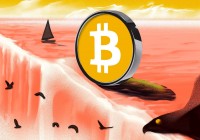News
Stay up to date on the latest crypto trends with our expert, in-depth coverage.

Spot Bitcoin ETFs, which have long been regarded as "automatic absorbers of new supply," are also showing similar signs of weakness.


The article describes the author's experience with his brother in 2020, when they discovered sniping opportunities on Uniswap during a downturn in the crypto market. By optimizing smart contracts and infrastructure, they managed to make huge profits in a short period of time. Summary generated by Mars AI. This summary is produced by the Mars AI model, and its accuracy and completeness are still being iteratively improved.



Bitcoin has fallen below $105,000, despite BlackRock launching a new Bitcoin ETF in Australia. Can institutional adoption prevent Bitcoin from dropping below $100,000?

1️⃣ Ebunker ETH staking yield: 3.32% 2️⃣ stETH (Lido) 7-day average annualized yield...
- 08:35Spot gold rises to $4,010 per ounce, up 0.78% on the dayJinse Finance reported that spot gold continues to rise, reaching $4,010 per ounce, up 0.78% on the day. (Golden Ten Data)
- 08:35Dalio: The Federal Reserve is fueling a bubble and monetizing government debtJinse Finance reported that Bridgewater Fund founder Ray Dalio stated that the Federal Reserve's previous quantitative easing was "a stimulus for depression," while the current quantitative easing is "a stimulus for bubbles." When the supply of US Treasuries exceeds demand, and the Federal Reserve is printing money and buying bonds, while the Treasury is shortening the maturity of the debt it sells to make up for the lack of demand for long-term bonds, these are all classic late-stage dynamics of the "big debt cycle." Because the fiscal side of US government policy is now highly stimulative (attributable to the huge existing outstanding debt and massive deficits, financed by large-scale issuance of government bonds, especially with relatively short maturities), quantitative easing will effectively monetize government debt, rather than simply re-injecting liquidity into the private system. This is what makes the current situation different, and it seems to make it more dangerous and more inflationary. This looks like a bold and risky "big bet," betting on growth, especially growth brought by artificial intelligence, and this growth is financed through very liberal easing of fiscal policy, monetary policy, and regulatory policy. We will have to monitor closely in order to respond appropriately. (Golden Ten Data)
- 08:33UBS: If Trump’s tariffs are overturned, the Federal Reserve may have an opportunity to cut rates as U.S. fiscal pressure mountsChainCatcher reports that UBS Group analysis indicates that if the US Supreme Court rules Trump's tariff policy illegal, it is expected to force the US government to refund approximately $140 billion in taxes to importers, which is equivalent to 7.9% of the projected federal budget deficit for fiscal year 2025. If the US government loses the case, the massive tax refund will immediately trigger a fiscal shock and may also lead to the formation of a structurally low-tariff trade environment. If trade partners do not retaliate, this environment will ultimately benefit the US economy and stock market. UBS estimates that the government is likely to use legal tools such as Section 201 and Section 301 of the Trade Act of 1974 to rebuild tariff barriers, but this process will take several quarters and result in reduced flexibility in trade policy. Although the refunds will bring windfall gains to importing companies, since tariff costs have not significantly suppressed S&P 500 earnings expectations, their overall market impact may be limited. UBS believes that the ruling may ultimately lower the overall effective tariff rate, increase household purchasing power, ease inflationary pressures, and provide the Federal Reserve with more room for rate cuts. As long as trade partners avoid escalating countermeasures, this will generally be welcomed by stock market investors.